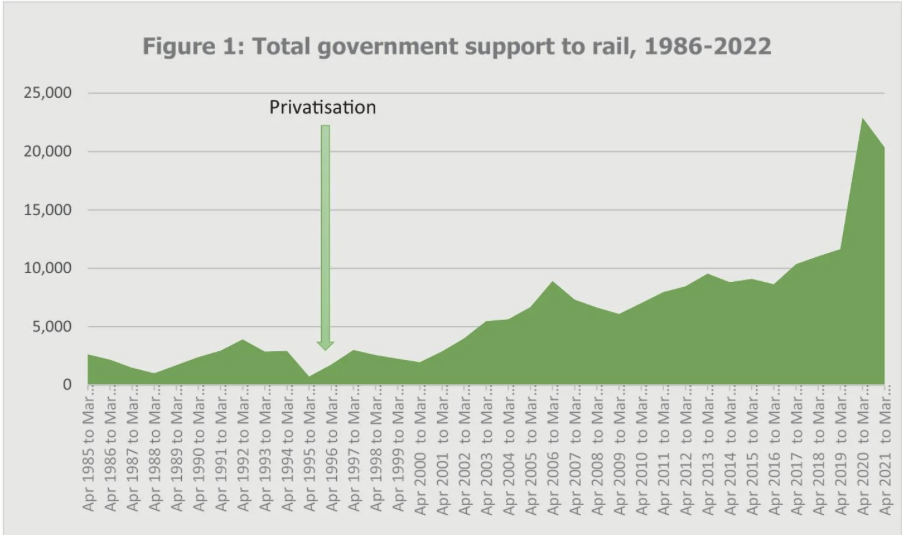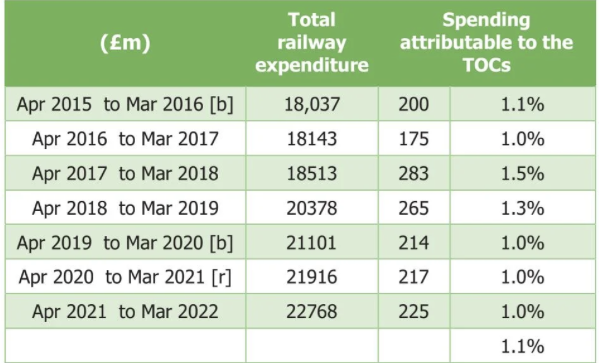
6 minute read
Living Off Rail
Train operating companies take little risk and only invest one per cent of the money spent on rail
According to an RMT report the private train operating companies who are currently closing ticket offices, calling for driver-only operations and cancelling services are racking in the money while the government bankrolls their hard line in the rail dispute.
In fact, train company bosses take little risk with their capital but have benefited from profits before tax of 126 per cent of the capital invested. Moreover 65 per cent of profits are locked away in shareholder dividends instead of being redistributed into improving the railway or upping workers’ wages and improving conditions.
RMT general secretary Mick Lynch said that the public needed to understand that train companies invest little or nothing in the railways and make completely unjustifiable profits which they squirrel away in shareholder dividends and bosses pay packets.
"It is a scandal that the travelling public is being ripped off by greedy rail privateers while at the same time the government oversees a corrupt system and prolongs a rail dispute for political reasons.
"It is high time this profits bonanza gravy train was halted, a deal done with the RMT and the railways returned to public ownership for the good of the country and railway workers,” he said.
PUBLIC SUBSIDY
The stark fact is that public investment in rail has dwarfed private sector spending since privatisation. Public spending has surged over the period since privatisation. On average over the last 15 years, the private sector has contributed just eight per cent of what government spends. 76 per cent of that eight per cent is spent on rolling stock by the ROSCOs and as we’ve shown before, even this supposed spending on rolling stock has been mainly subsidised by government funding.

Franchise subsidies have risen in the last decade in large part to cover the rising costs of rolling stock. As the authors of Rebuilding Rail say, ‘while technically considered as private expenditure, this is underwritten by franchise contracts which are only rendered financially attractive by the public subsidy to Network Rail and in most cases a public subsidy to the TOC that will be leasing the trains’.
While the private train operating companies don’t like to talk about this in front of the wider public, it is something they actually boast about in front of their shareholders.
For example, in 2019, FirstGroup CEO Matthew Gregory reassured his investors that franchising involved little capital expenditure: “As we have said before, the capital expenditure in rail is normally funded through the franchise payments or through thirdparty capital grants. The investment in Rail CapEx is usually using someone else's cash.” In their February 2022 trading update, FirstGroup said: “First Rail continues to be cash capital-light, with any capital expenditure required by the four management feebased operations fully funded under the new contracts”.
This has always been the case throughout privatisation. As the ORR noted over 10 years ago “TOCs tend to be thinly capitalised companies with few assets and relatively little ability to bear downside risks. To help manage this issue, revenue risk-sharing mechanisms were introduced into franchise contracts”.
In addition, the TOCs are insulated from the full costs of operating, maintaining, renewing and enhancing the rail network by massive grants to the publicly owned Network Rail. These subsidies – network grant – are given in return for Network Rail keeping its track access charges to the TOCs artificially low. As the ORR noted in 2012, “the industry as a whole remains heavily subsidised... if Network Rail were to cease to receive [network grant] and instead rely on revenue generated by track access charges then all TOCs would require a positive, significant subsidy”.
LITTLE RISK, BIG RETURN
The train operating companies like to stress how small their profit margins are. Before the pandemic and the changes in contracts, they liked to estimate their returns at three per cent. Now, under the variety of emergency contracts and National Rail contracts signed with the government, the TOCs stress their ‘two per cent’ return. This is measured as ‘Return on Sales (ROS), profits as a proportion of revenue.
But matters look very different if we look at the rate of profit measured against the capital they put up. Investors use the measure of Return on Capital Employed (ROCE) to measure the return against the ‘risk’ taken by businesses in investing capital. ROCE is measured by dividing the profits before tax by long-term capital invested, or ‘capital employed’. Capital employed is calculated by subtracting current liabilities (money the company owes within one year) from the company’s total assets.
As one academic study has argued, ‘like many other outsourcing businesses, train operating requires very little capital investment, so that a modest return on sales turns into a starry ROCE’.

As can be seen, the TOCs invest very little in the railways but their company accounts show that their Return on Capital Employed (ROCE) is very high. For the period between 2013 and 2022, the average Return on Capital Employed was 126 per cent. This is comparable with the findings of the academic study mentioned above which studied TOCs’ ROCE in 201012 and found that the average ROCE in this period was 121 per cent.
In other words, the TOCs’ have never put up much capital, and never taken much risk but they’ve got a great rate of return on the money they did put up.
The final nail in the idea that the train operating companies have brought new investment to the railways is the fate of the profits that they make.
Totalling up the profits before tax for the train operating companies for each year since 2015-16 and comparing them with the dividend payments they declared to the Office of Rail and Road, we can see that on average 65 per cent of all the profits before tax made by the TOCs is disappearing out of the industry into the pockets of the owning groups and from there being siphoned off by City investors or foreign state-owned companies to subsidise their own passenger fares.
In summary, these companies put almost nothing into the railways in terms of investment, typically make returns far above their investment and then funnel most of that money out of the railway industry.
• The full RMT report Parasitic bodies: The business model of the private train operating companies who are wrecking our railways is available HERE



